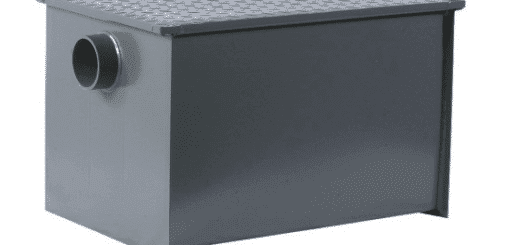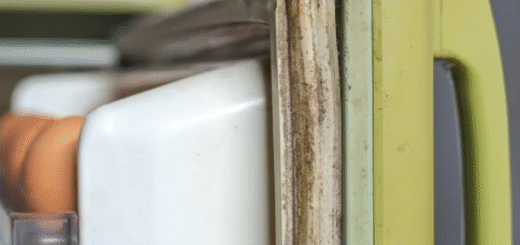Removing Stains from Marble Surfaces
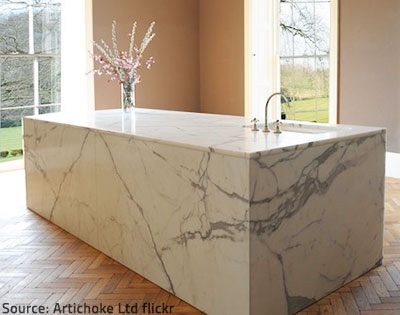
Marble furniture always becomes the centerpiece of a room.
Peerless in terms of luminescence, softness, and distinctive veining, marble has always been one of the most widely preferred and highly valued materials for accent pieces in a home’s decor. Marble surfaces add elegance and style to surroundings and can stand the test of time when properly taken care of. Despite its apparent strength and durability, marble is very porousPorous describes a material that contains small openings or ... More and susceptible to stains and scratches. Even when professionally polished and sealed, this beautiful natural stone easily soaks up liquids that can leave ugly stains on the delicate surface. So to preserve the gorgeous look and feel of marble surfaces for a long time, you need to know how to remove any potential stains in a quick and efficient manner.
What to Do When Something Spills on a Marble Surface
Any spills on a marble surface must be immediately blotted up to prevent damage. Use a paper towel to absorb the liquid – wipe the surface gently with circular motions, working from the edge of the spill inward. Then, add several drops of a mild cleaning agent to a gallon of warm water, wash the area of the spill, and rinse it thoroughly. Wipe the surface dry with a soft cloth and repeat the cleaning process once again. If a persistent stain remains despite your efforts, try the efficient methods for removing stains from marble listed below.
How to Remove Stains from Marble
The longer a stain sits, the harder it will be to remove it. So, you need to take quick and adequate measures as soon as you notice a stain on a marble surface in your home. Have in mind, though, that different kinds of stains require different treatment:
How to Remove Oil-Based Stains from Marble Surfaces
Grease, cooking oil, milk, peanut butter, creams, cosmetics, and other oil-based products easily penetrate the porousPorous describes a material that contains small openings or ... More structureStructure refers to the framework or components of a buildin... More of the marble and leave persistent stains that darken the stone’s surface.
To successfully remove the stain, you need to draw out the oil from the marble. Try cleaning the area with a soft, liquid cleanser mixed with several drops of ammonia or acetone first. If this simple trick doesn’t yield satisfactory results, apply a layer of poultice (see below for more details on marble poultice) and leave it on the site for a day or two. Rinse with warm water, dry the surface well, and repeat the process, if necessary.
How to Remove Organic Stains from Marble Surfaces
Stains from coffee, tea, wine, foods and other organic substances are pink to brown in color and relatively easy to remove. Mix a few drops of ammonia with 12% hydrogen peroxide to spot clean the stained area. However, be careful when using this method on darker stones as the hydrogen peroxide can lighten the color of the marble.
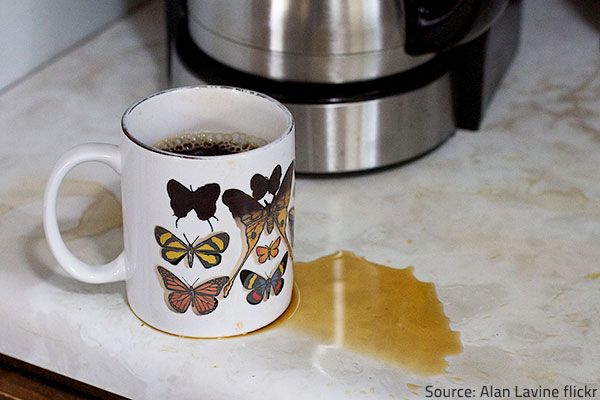
To successfully remove stains from marble, you need to draw them out of the delicate surfaces.
How to Remove Soap Scum from Marble Surfaces
Soap scum builds up within the marble’s voids and pores, quickly staining the surfaces. So shower walls, bathroom floors and vanities, and other marble pieces that come in contact with soapy water need periodical cleaning. Fortunately, it’s quite easy to remove soap scum stains from marble – just add half a cup of ammonia to a gallon of water and wipe the surfaces clean. Be careful not to use too much ammonia, though, as it may dull the marble surface.
How to Remove Rust Stains from Marble Surfaces
Metal furniture, flower pots, cans, screws, nails, etc. can stain the polished marble surfaces and allow for rustRust is a reddish-brown oxide that forms on iron or steel du... More buildup. Bronze, copper or brass items embedded in the marble can also result in greenish or muddy-brown metal stains that are very difficult to remove.
If you notice a rustRust is a reddish-brown oxide that forms on iron or steel du... More stain early enough, you can remove it with the help of a soft wire brush that will reach into crevices without damaging the polished surface. To draw out set-in metal stains, however, you will need a poultice and chemical treatment with a rustRust is a reddish-brown oxide that forms on iron or steel du... More remover. Professional help may also be required to fully restore the smoothness and luster of the stone.
How to Remove Ink Stains and Paint Stains from Marble Surfaces
You can use lacquer thinner to get ink stains (from markers, pens, etc.) and small amounts of paint out of marble. More persistent ink stains and larger paint stains can be removed with the help of a marble poultice that will soak up the pigments from the stain within a couple of days. Heavy paint coverage, however, has to be treated with a commercial “heavy liquid” paint stripper. Be very careful when working with paint strippers and follow the manufacturer’s directions strictly to avoid etching the delicate marble surface. Don’t forget to thoroughly rinse the area with warm water and blot it dry in the end.
How to Remove Soot Buildups and Smoke Damage from Marble Surfaces
Deep cleaning is required to restore smoke or fire stained marble surfaces to their original beauty and shine. SootSoot is fine black particles composed of carbon and other ma... More buildup, however, can be easily removed with soapy water or baking soda. If the dark stain is still visible when you flush the area, apply a poultice, let it stay for 24 hours, and rinse well with warm water.
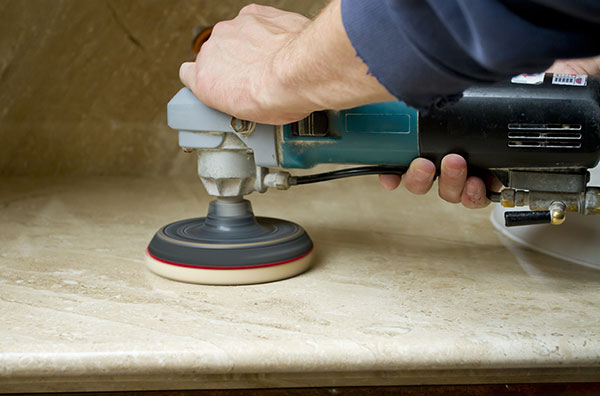
Buffing the marble surface restores its original luster.
How to Remove Etch Marks from Marble
Etch marks are usually caused by acidic juices (fruit juices, vinegar, tomato-based sauces, etc.) or cleaning products that contain harsh chemicals. Some materials etch the finish but don’t leave a stain, while others both etch and stain the surface. Water stains on marble, for example, are actually etches, not stains – the mineral depositsMineral deposits are solid residues left behind when water e... More in the water degrade the surface finish of the stone. To remove water rings, you need to buff the marble surface with dry 0000 steel wool.
Most acidic juices both etch and stain the marble surface. You need to remove the stain first (using a poultice), then wet the surface with clear water and sprinkle marble polishing powder on the affected area. Rub the powder onto the stone with a damp cloth or with the help of a buffing padThe pad is the cushion or underlayment beneath carpet that p... More (with a low-speed power drill). It may take some time and effort until the etch mark disappears and the marble surface shines.
If the etched area is large or if the etch mark has not been promptly taken care of, you may need professional assistance for refinishing or re-polishing the damaged surface.
You can also use corn starch (especially on grease stains), hydrogen peroxide pads (on lighter stones), or rubbing alcohol spray to remove stains from marble, but applying marble poultice is your most efficient option.
Marble Poultice
A marble poultice is used to draw stains out of marble surfaces. In fact, it is a liquid cleaner or chemical mixed with a white absorbent material to form a paste with the consistency of sour cream or peanut butter.
How to Make a Marble Poultice
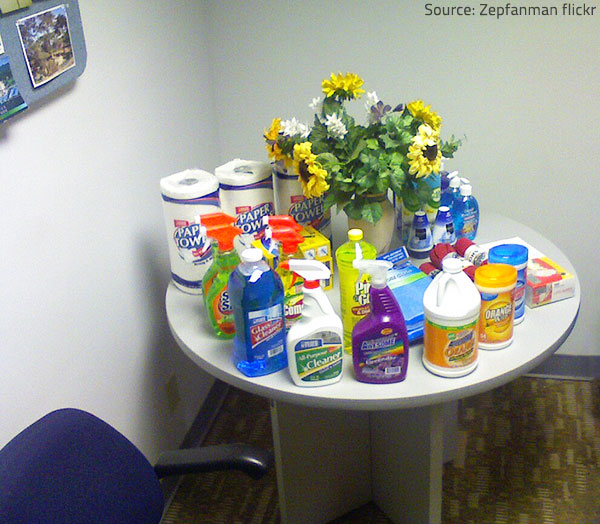
Using adequate marble cleaning products considerably improves the appearance of the stained marble surface.
Poultice materials include kaolin, fuller’s earth, diatomaceous earth, powdered chalk, white molding plasterPlaster is a building material made of lime, gypsum, or ceme... More, whiting, talc, baking soda, flour, etc. Cotton balls, whitepaper towels, or gauze pads can also be used to make a marble poultice.
To prepare a marble poultice, mix a poultice material with water, mineral spirits, hydrogen peroxide, acetone, or ammonia (be careful not to mix whiting or iron-type clays such as fuller’s earth with acid chemicals as the reaction will cancel the effect of the poultice).
– If using a powdered poultice material, mix it with the cleaning agent or chemical to form a thick paste;
– If using paper, soak in the chemical and let drain (the liquid should not be dripping).
How to Use a Marble Poultice
- Wet the stained area with clean water;
- Spread a thin layer of the poultice (about 1/4 – 1/2 inch) over the stained area with the help of a wood or plastic spatula;
- Cover the poultice with plastic wrap and tape it in place;
- Let the poultice stay on the site for about 24 to 48 hours, so that it can dry out completely. The liquid cleaner (or chemical) will draw out the stain into the absorbent material during the dryingDrying is the process of removing moisture from materials, s... More process;
- When the paste is fully dry, use a cloth soaked in warm, soapy water to wipe away the paste (do not scrape the poultice off, as you risk scratching the marble surface);
- Rinse with clean water and buff dry with a soft cloth (microfiber or chamois);
- If the stain is still visible, repeat the entire process. Several applications may be necessary, depending on the type of the stain and the time it has had to set in.
Applying a poultice will certainly yield good results, considerably improving the appearance of the stained marble surface. However, some stains may not be completely removed. If the stain doesn’t come out after four or five poultice applications, you need to consult professional stone refinishers.
Bonus Tips on Marble Stain Removal
In addition to the details provided above, there are several other crucial things to keep in mind when getting stains out of marble:
-
- Take care to prevent staining the marble in the first place – reseal marble surfaces on a regular basis, use coasters under cups and glasses, avoid placing metal containers directly on the marble surface, don’t let citrus or alcohol products sit on the surface, use plastic trays to hold bottles of cleaning agents, cosmetics, or anything else that could damage the stone surface if accidentally spilled, etc.;
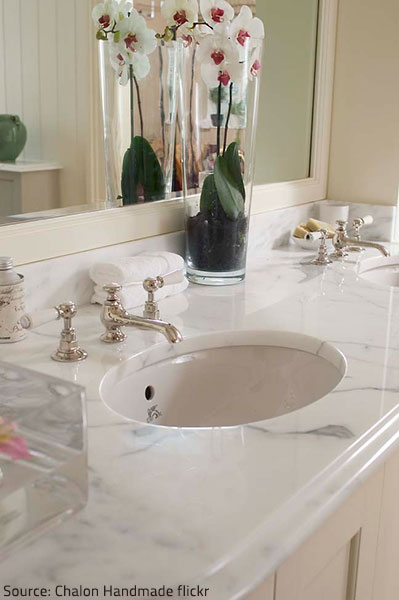
Proper maintenanceMaintenance is the routine care, inspection, and repair of a... More will allow you to preserve the beauty of the marble surfaces in your home for a long time.
- Always test the poultice (or any other marble cleaning products) you intend to use on a small inconspicuous area first;
- Never mix ammonia with bleach (this combination creates a toxic and lethal gas);
- Do not use acetone on light marble or hydrogen peroxide on darker stones;
- Use plenty of warm water to rinse the marble surface really well, so that no residueResidue is any leftover material, such as soot, dust, or che... More remains;
- Do not let wet marble air dry because water spots may remain on the surface;
- If the marble surface is etched by the chemical used in the poultice, apply polishing powder and buff gently to restore the surface;
- When dealing with rustRust is a reddish-brown oxide that forms on iron or steel du... More or metal stains, or large paint stains, or any deep-seated stains, you may not be able to safely remove them. Your best bet is to call professionals to restore the excellent condition of your delicate marble surfaces.
Additional tips from Marble & Granite Supply of Illinois:
http://www.marble-granites.com/resource-center/care-and-maintenance/do’s-dont’s-of-stonecare.aspx
http://www.marble-granites.com/resource-center/care-and-maintenance/stain-removal.aspx











